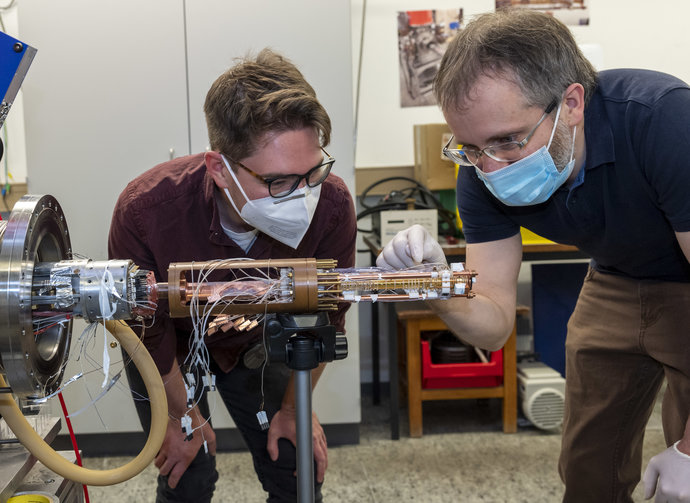
For the first time, physicists have succeeded in successfully realizing a new method for cooling protons using laser-cooled ions - in this case beryllium ions. The innovative feature of the new system is that the two particle types are located in spatially separated traps. This means it is now possible to provide the cooling effect with the help of an electrical resonant circuit over a distance of nine centimeters from one trap to the other. The team at the PRISMA+ Cluster of Excellence at…
![[Translate to English:] [Translate to English:]](/fileadmin/_processed_/d/c/csm_GSI_Green_IT_Cube_2a_bea66421de.jpg)
The GSI Helmholtz Centre was a successful co-applicant to fund a consortium of the National Research Data Infrastructure (NFDI). Under this program, a consortium with strong GSI participation will be funded for the next five years. This was announced by the Join Science Conference (GWK) of the German federal and state governments at its meeting in July.
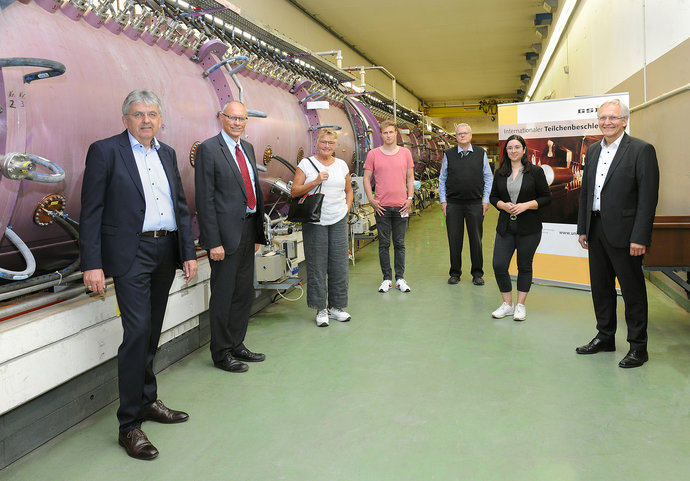
The member of the Bundestag Daniela Wagner (Bündnis 90/Die Grünen) recently informed herself about the scientific activities at GSI/FAIR and the progress of the future accelerator center FAIR, which is currently being built at GSI. During the information visit as part of her summer tour, Daniela Wagner was accompanied by Nina Eisenhardt, member of the Hessian parliament, and Andreas Ewald, chairperson of the Darmstadt city council fraction (both Bündnis90/Die Grünen).
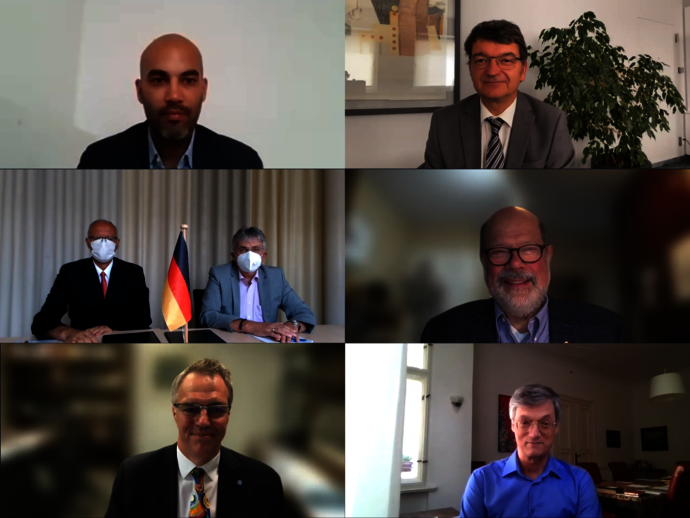
A new agreement strengthens international research collaborations by creating exchange opportunities for PhD students and postdoctoral fellows: The nonprofit Canadian research organization Mitacs and the GSI Helmholtzzentrum für Schwerionenforschung are delighted to launch a formal partnership to support German and Canadian doctoral students and postdoctoral fellows at host-country research institutions. GSI becomes the third Helmholtz center after Forschungszentrum Jülich (FZJ) and Karlsruhe…
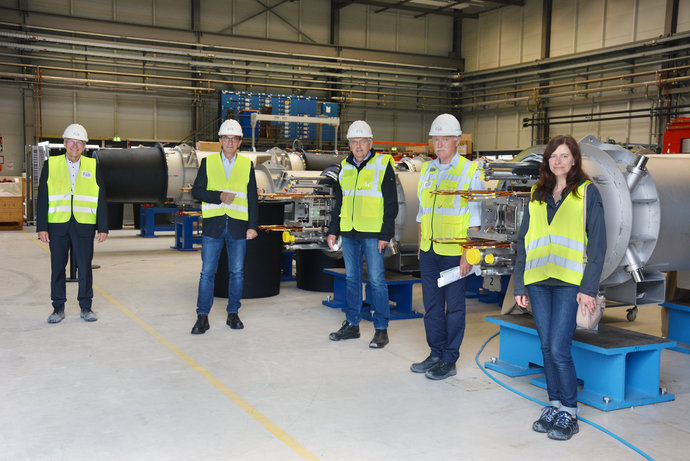
The Hessian Minister of Finance, Michael Boddenberg, recently visited GSI and FAIR. The progress and developments of the FAIR project were the focus of the meeting. He was welcomed by Dr. Ulrich Breuer, the Administrative Managing Director of GSI and FAIR, Jörg Blaurock, the Technical Managing Director of GSI and FAIR, as well as Jutta Leroudier from the Press and Public Relations department of GSI and FAIR. Achim Baumbach, Deputy Head of department at the Ministry of Finance, and Moritz Josten,…
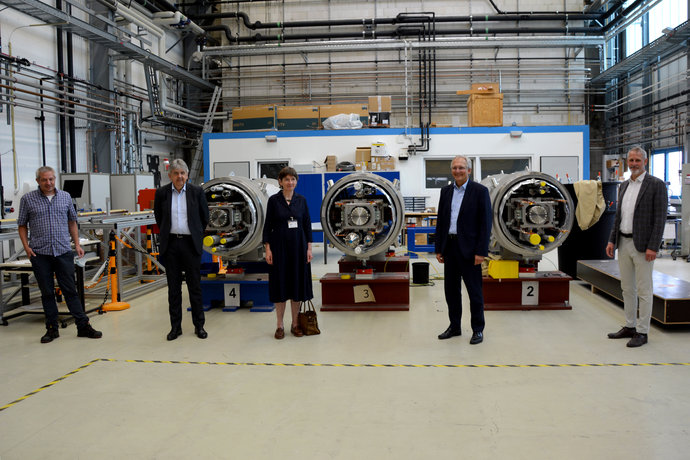
Hildegard Förster-Heldmann, member of the Hessian parliament, deputy chairperson of the parliamentary group of Bündnis 90/Die Grünen Hessen and chairperson of the city council fraction in Darmstadt, recently visited GSI and FAIR. Dr. Ulrich Breuer, Administrative Managing Director of GSI and FAIR and Jörg Blaurock, Technical Managing Director of GSI and FAIR as well as Dr. Ingo Peter, Head of Press and Public Relations of GSI and FAIR, welcomed her. The politician was accompanied by Oliver…
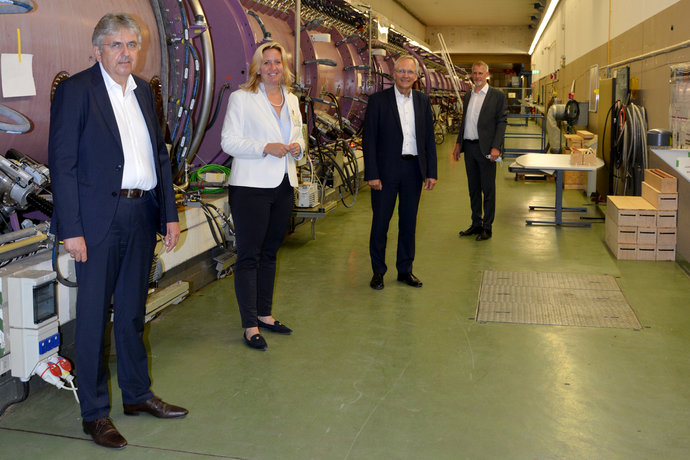
The progress of the FAIR project, the current scientific activities and the campus development were central topics during the visit of the chairperson of the CDU parliamentary group in the Hessian state parliament, Ines Claus, at GSI and FAIR. The politician from Groß-Gerau was welcomed by Dr. Ulrich Breuer, Administrative Managing Director of GSI and FAIR and Jörg Blaurock, Technical Managing director of GSI and FAIR as well as Dr. Ingo Peter, Head of Press and Public Relations of GSI and FAIR.…
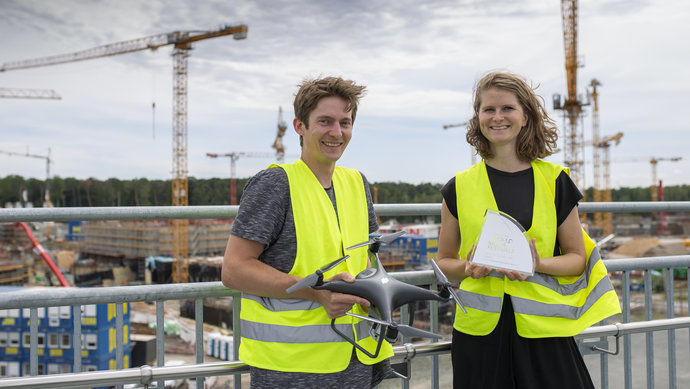
The "Longterm Dronelapse 2018-2020" with which GSI/FAIR document the progress on the FAIR construction site was awarded the "Intermedia-globe SILVER Award" by the World Media Festival. 811 entries from 41 nations were submitted to this film competition.
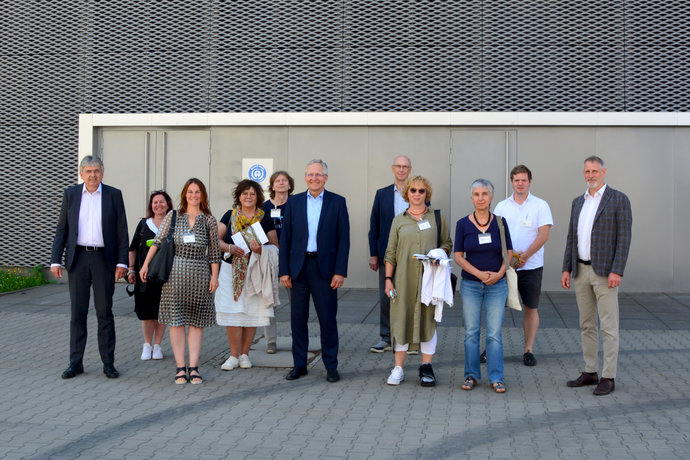
The energy-efficient supercomputing center Green IT Cube was the focus of the visit of Katy Walther, member of the Hessian parliament. She was accompanied by members of the county council of the administrative district Offenbach.












